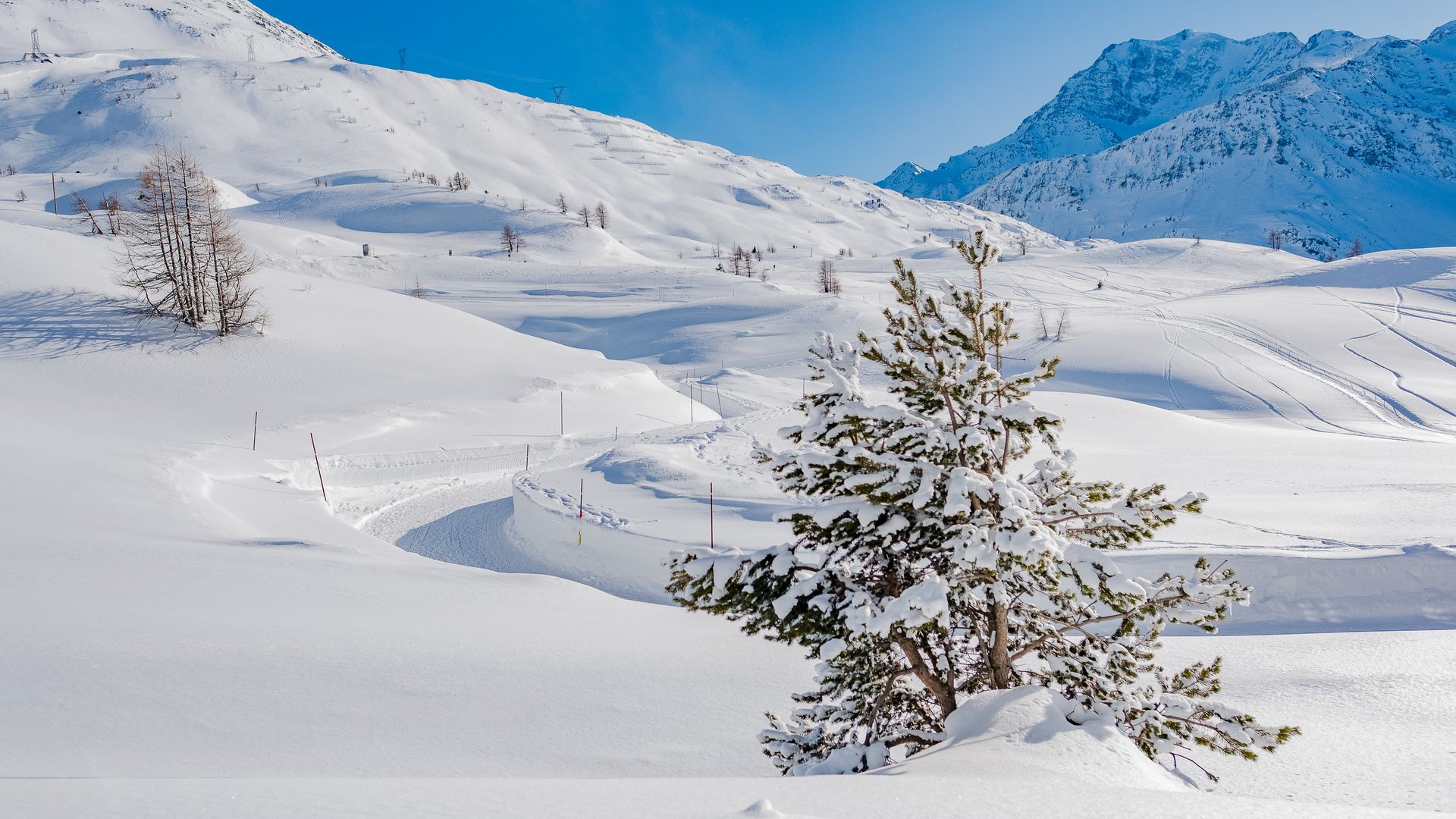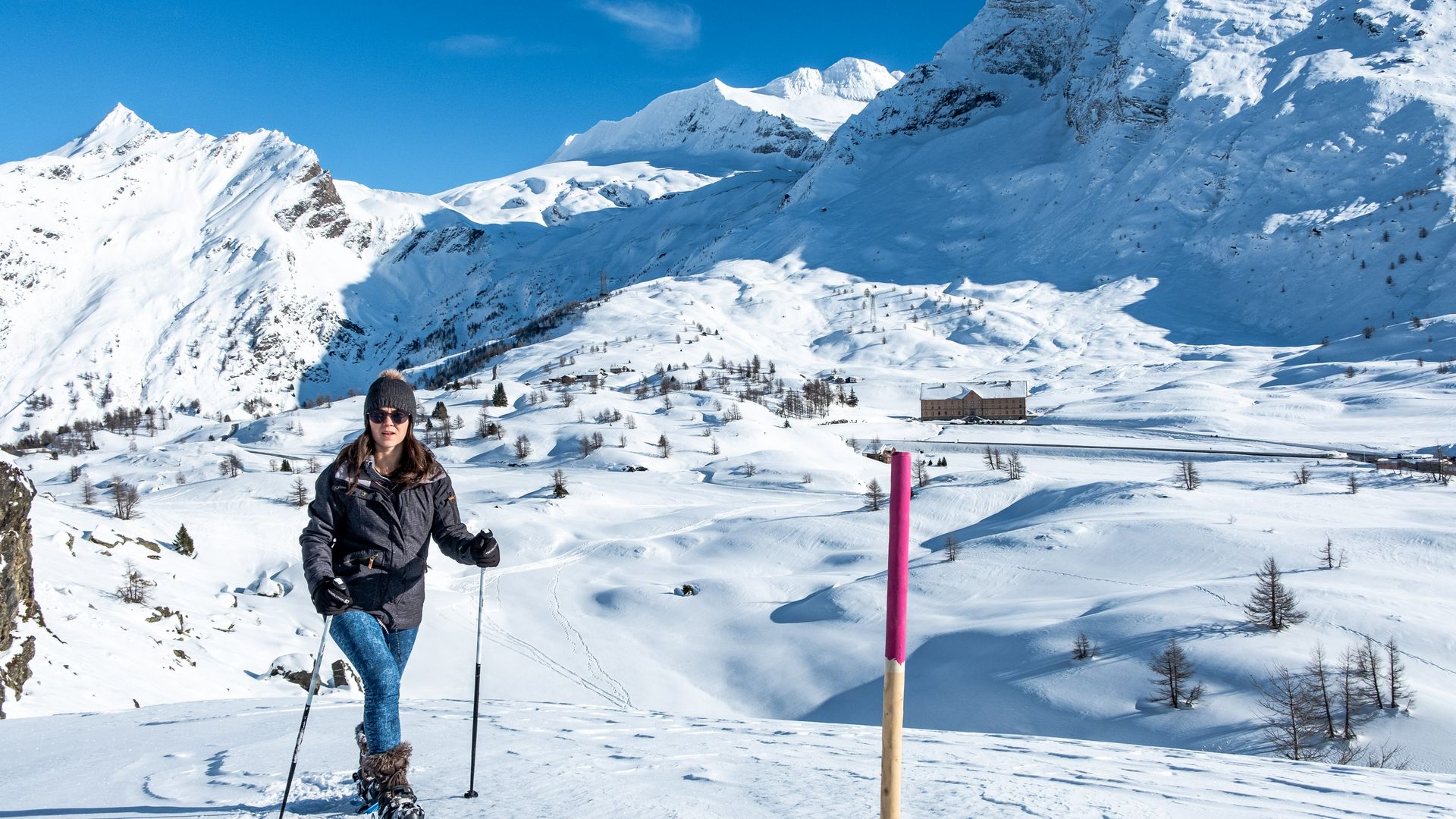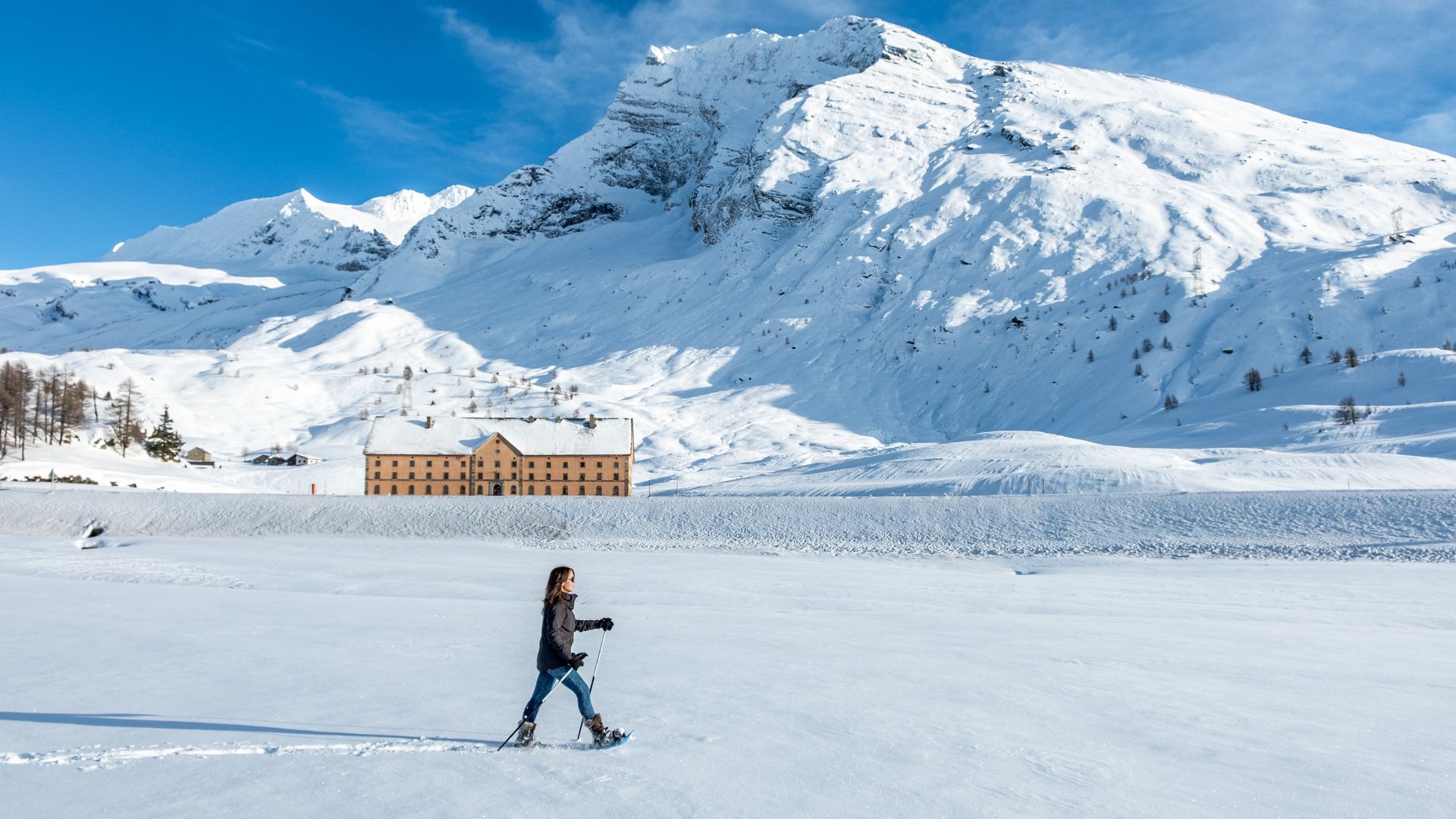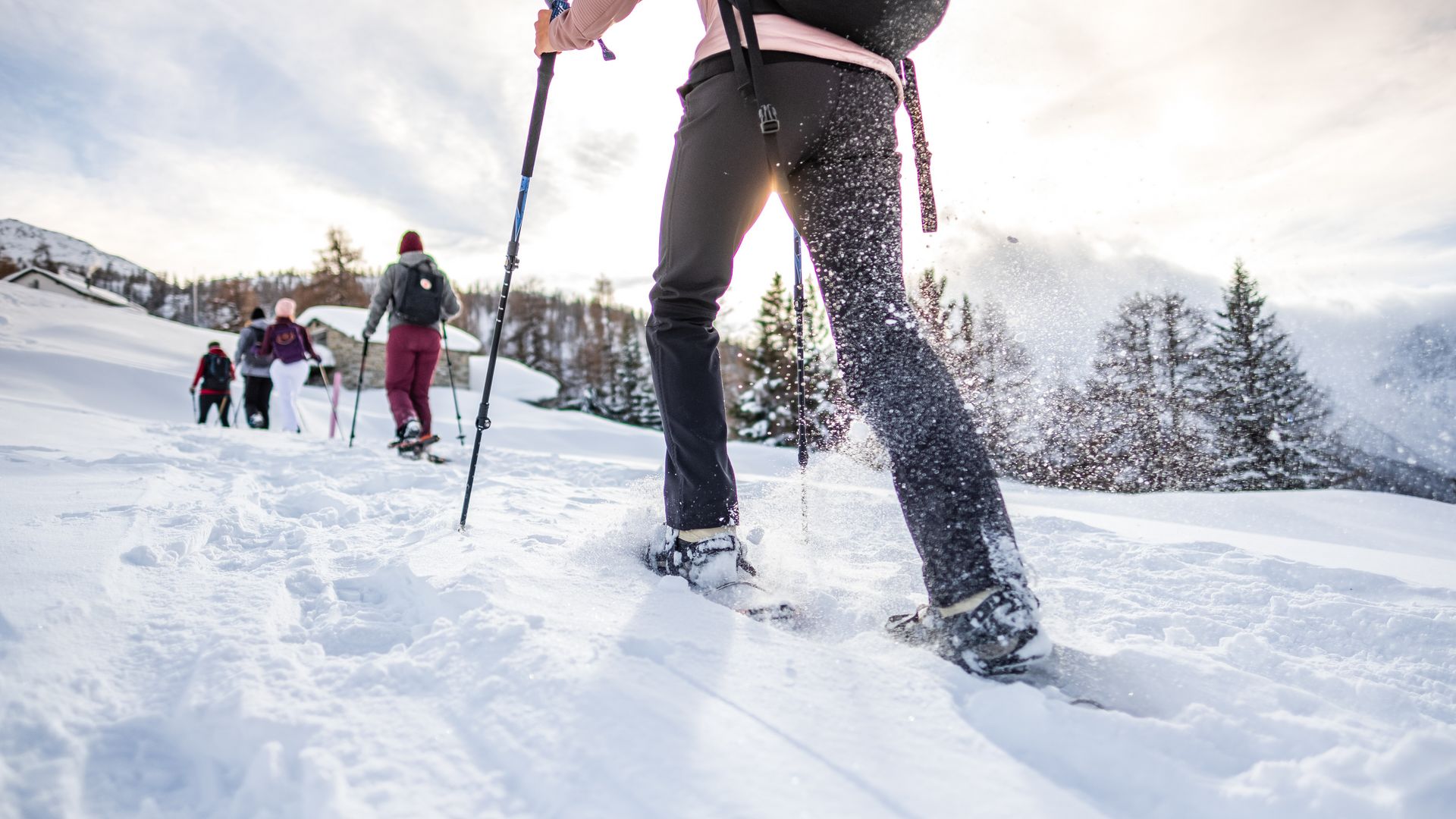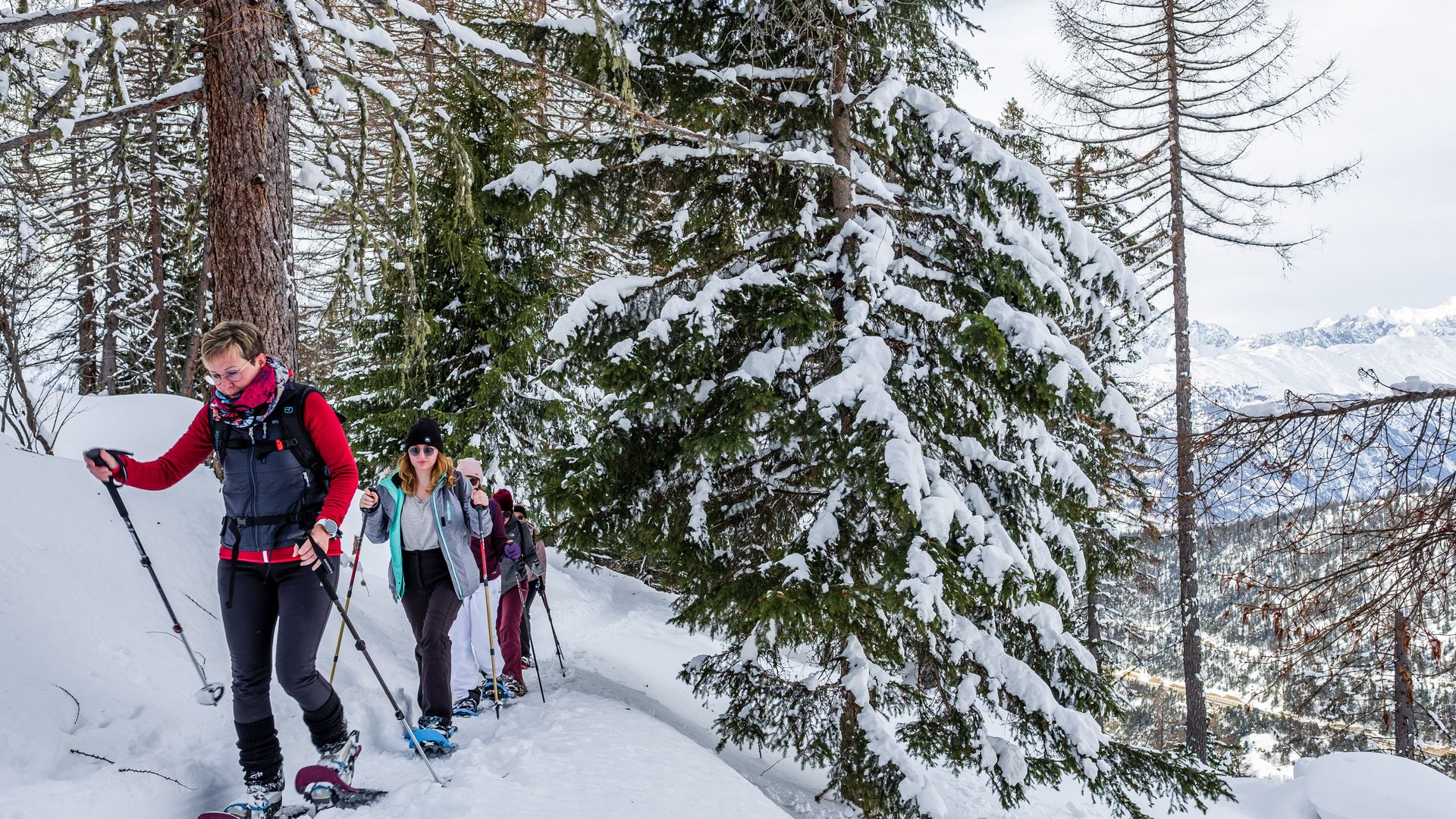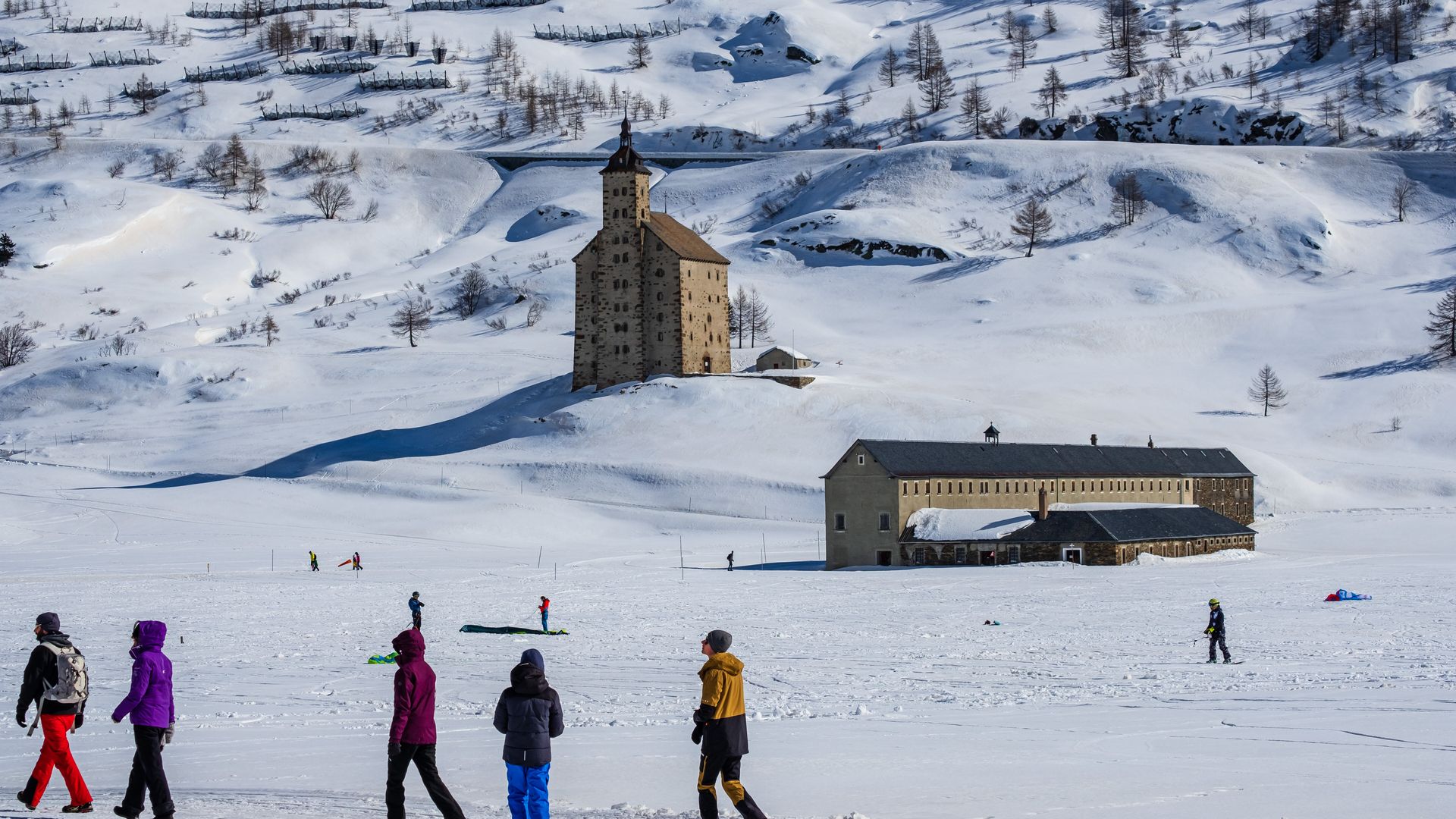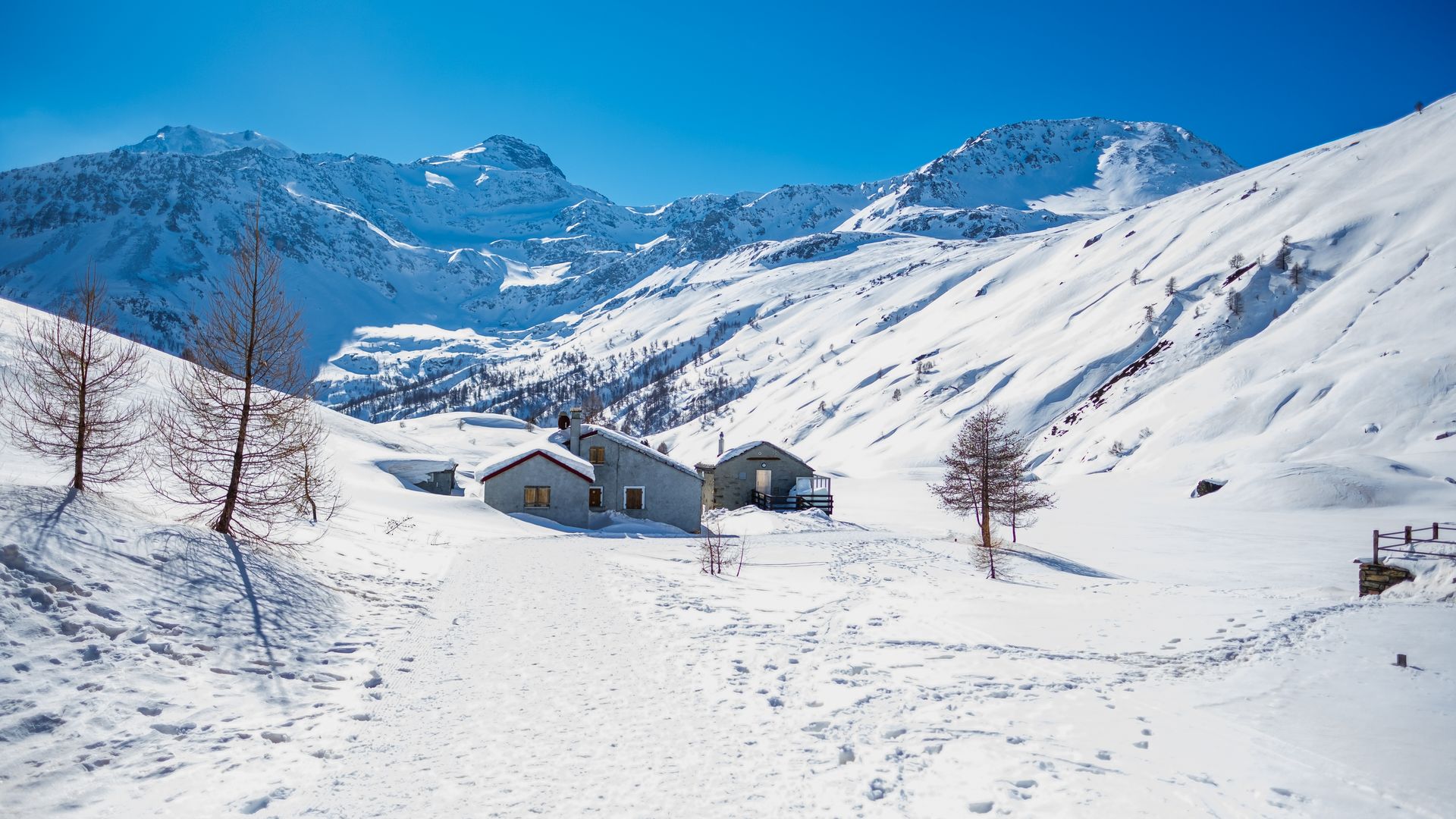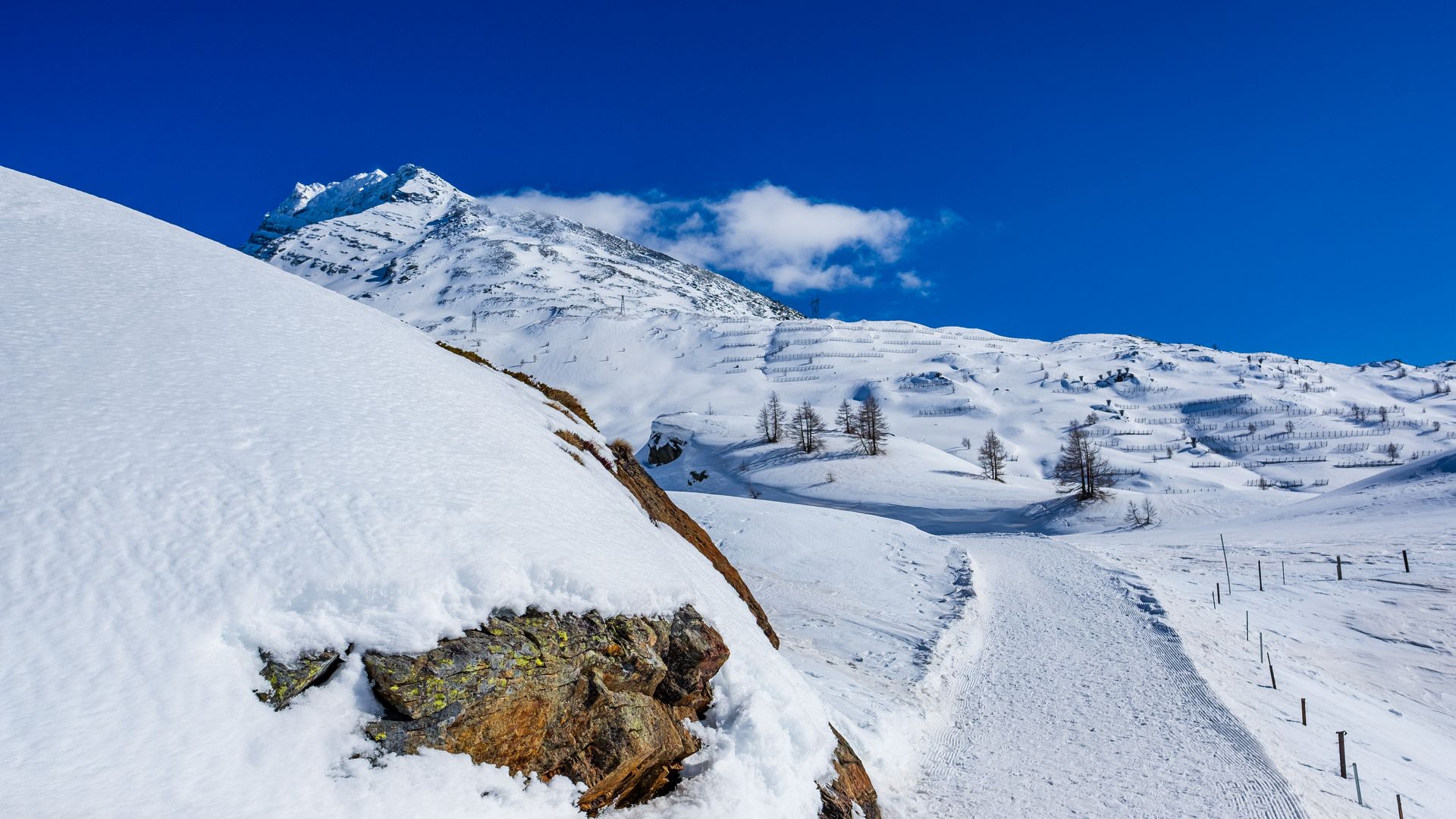Out and about in a winter wonderland
On our snowshoe trails and winter hiking trails, you’ll see a whole new side of the fascinating mountains and the beautiful winter landscape of the Pennine Alps. You’ll glide through the wintry world on the Simplon Pass accompanied by the muffled sound of snowshoes in the fresh snow and a refreshing breeze caressing your face.
In Rothwald and Rosswald and on the Simplon Pass, you have the choice between groomed winter hiking trails and signposted snowshoe trails.
Plenty more snowshoe adventures await in the Simplon region. However, please note that there are certain rules you need to observe. The terrain is not always safe; avalanches can happen and you have to be considerate of the forest and wildlife.
